1) Selecting plants that are behaved and relatively short (under 3ft). This means doing research, as plants can spread / grow differently based on soil type, moisture levels, and levels of plant competition. This is one reason gardening by ecoregion vs. hardiness zone is a good idea.
2) Planting in drifts and masses. The larger the bed, the larger the masses and drifts. And you can do this in layers (ground, mid height, architectural).
3) Limiting blooms. In a smaller garden (under 1,000ft), having no more than 3 plants in bloom at any one time may show more control and less visual cacophony.
4) Employing a monochromatic base layer. This green mulch / matrix not only replaces annual wood mulch applications while fighting weeds and conserving soil moisture, it helps tie the landscape together and make it more legible. Consider how lawns do this.
5) Plan for winter interest. Many of our native grasses and herbaceous perennials carry much structural and textural interest deep into winter. Using the same principles as #2 above, we can hit two birds with one stones (please leave birds alone -- their numbers are falling fast).
Of course, every site requires nuance with the above points, so they are not hard and fast rules but more like core guidelines. And when we use native plant communities we increase ecological function, especially wildlife habitat.
If you want to learn more, try our online class "Fundamentals of Garden Layers." We'll dive into the above even further in Benjamin's new book Prairie Up: An Introduction to Natural Garden Design (spring 2022).

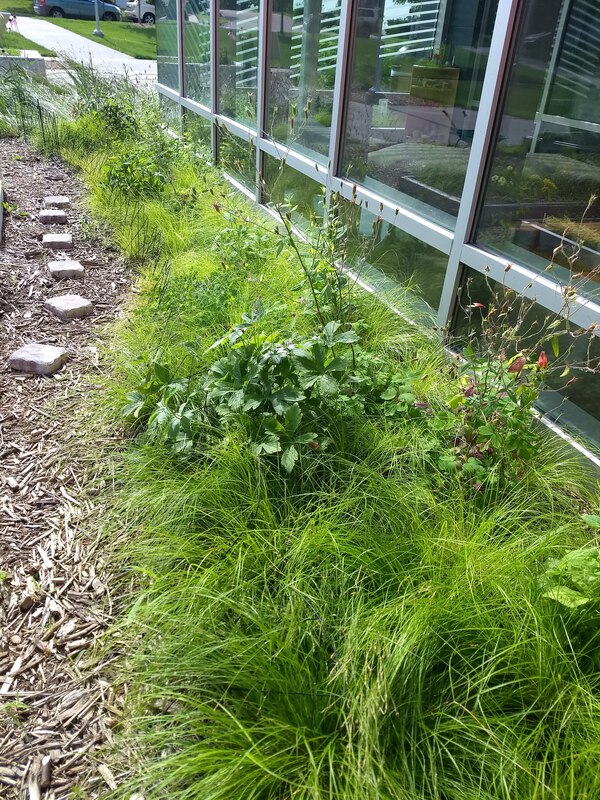
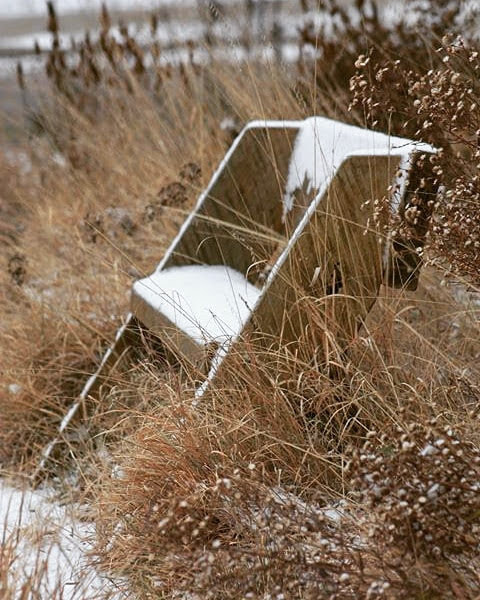
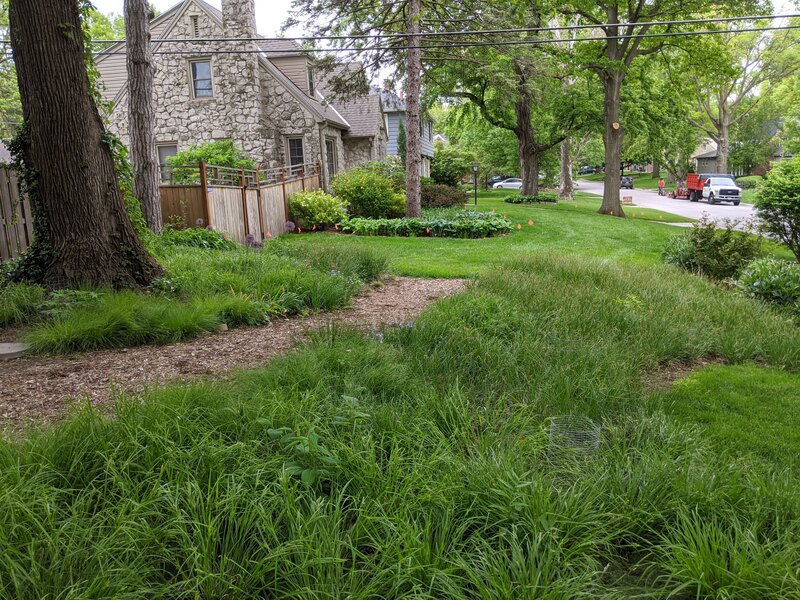
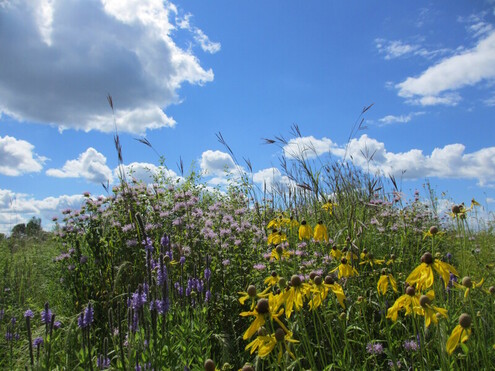
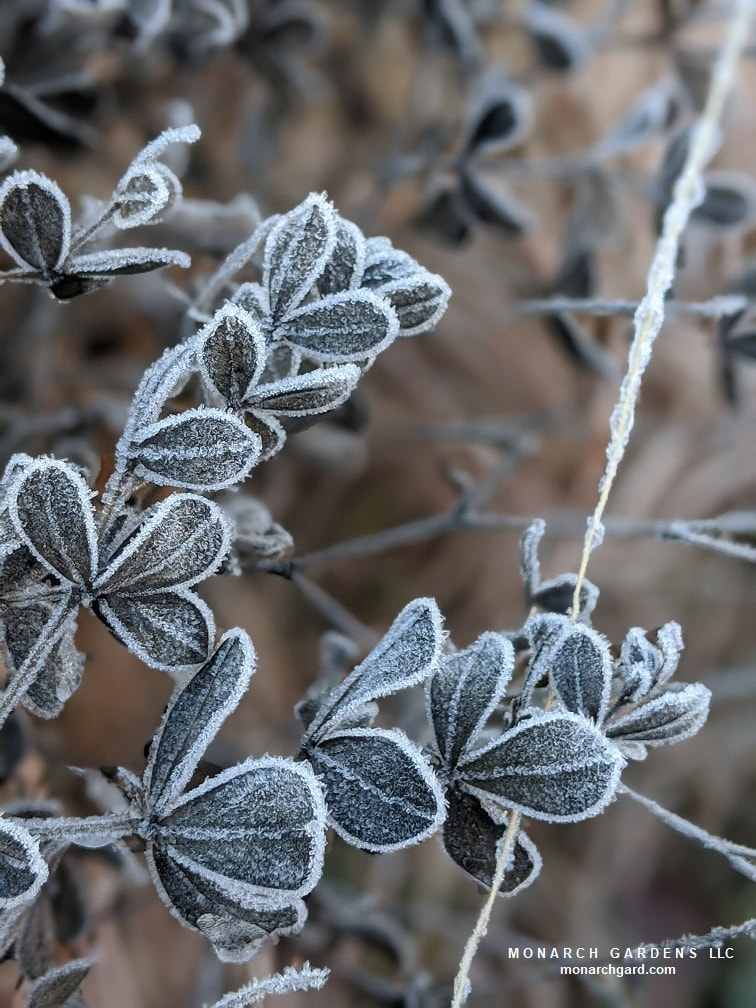
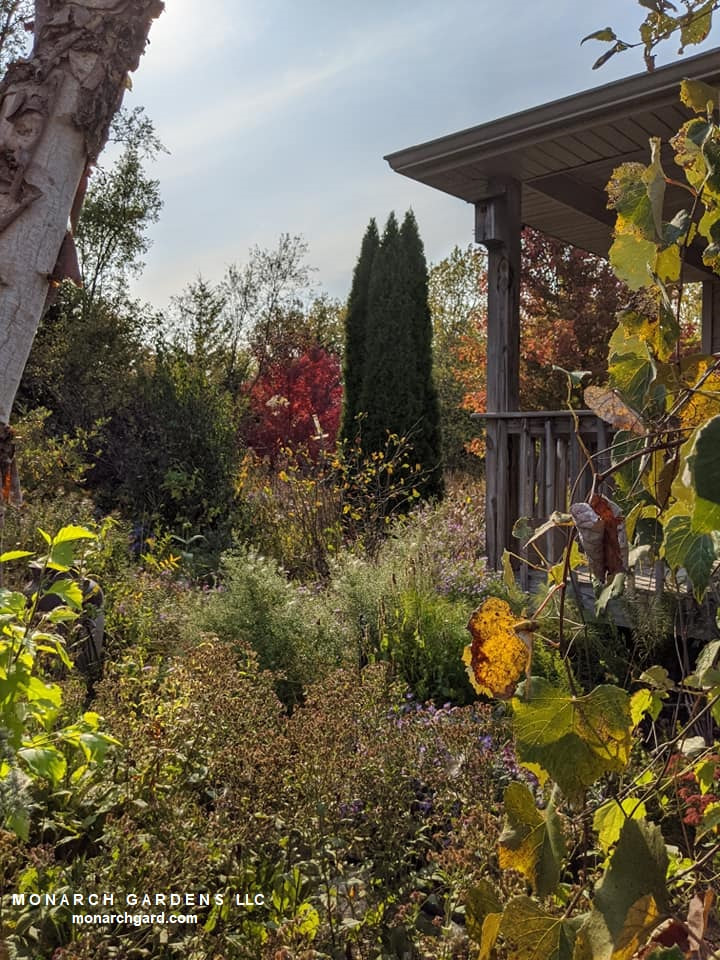
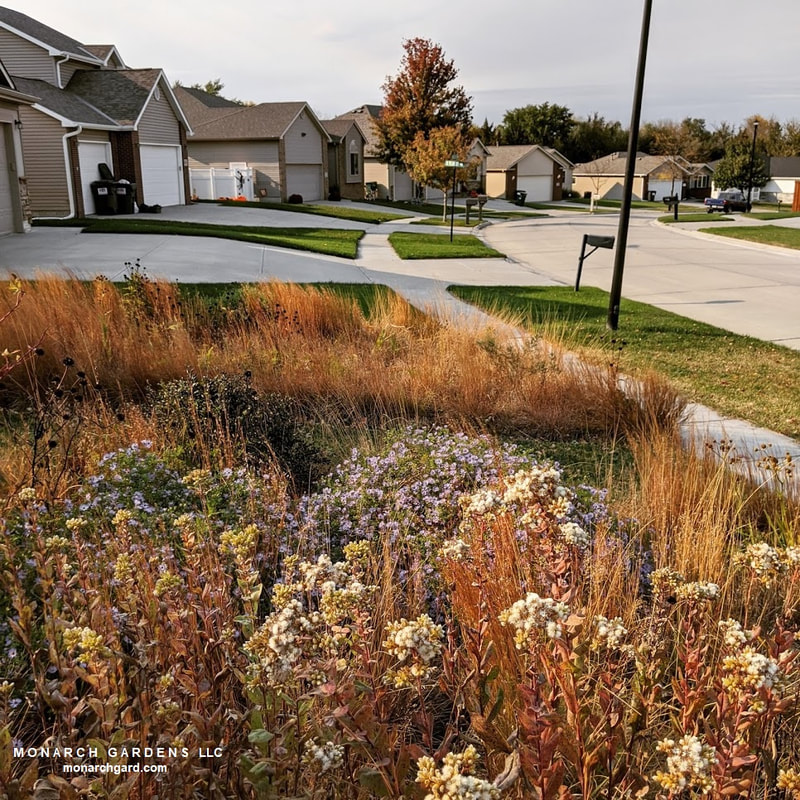
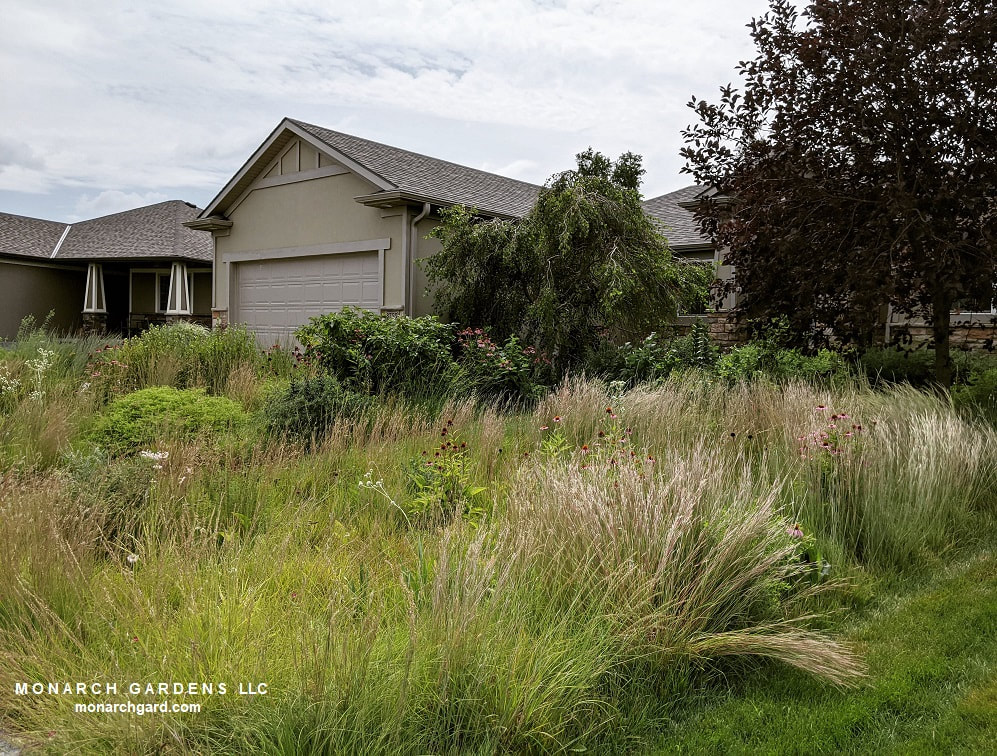
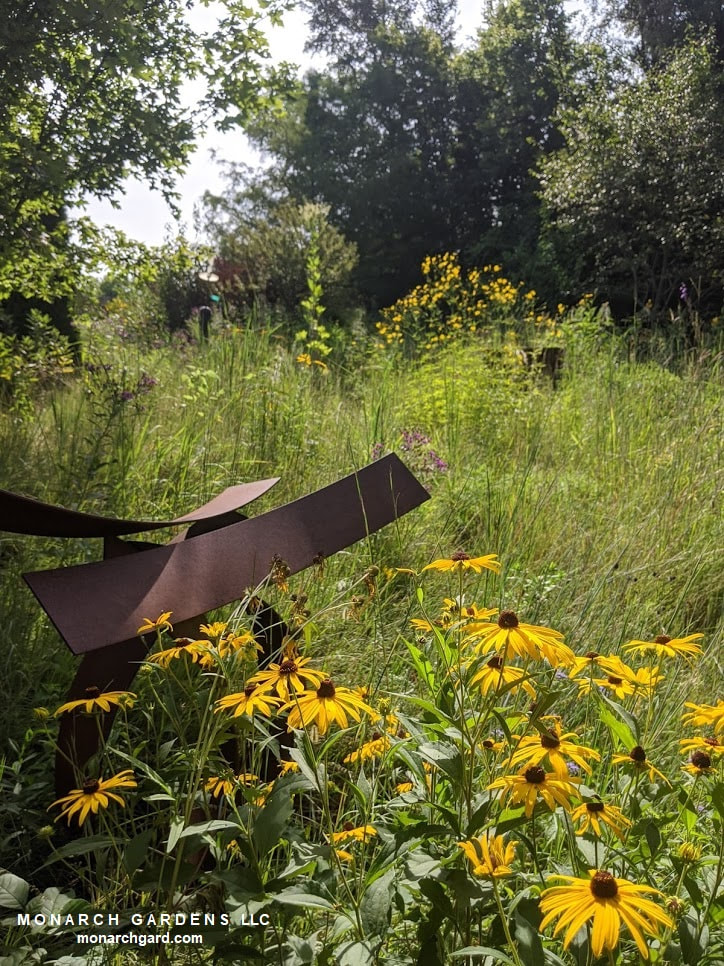
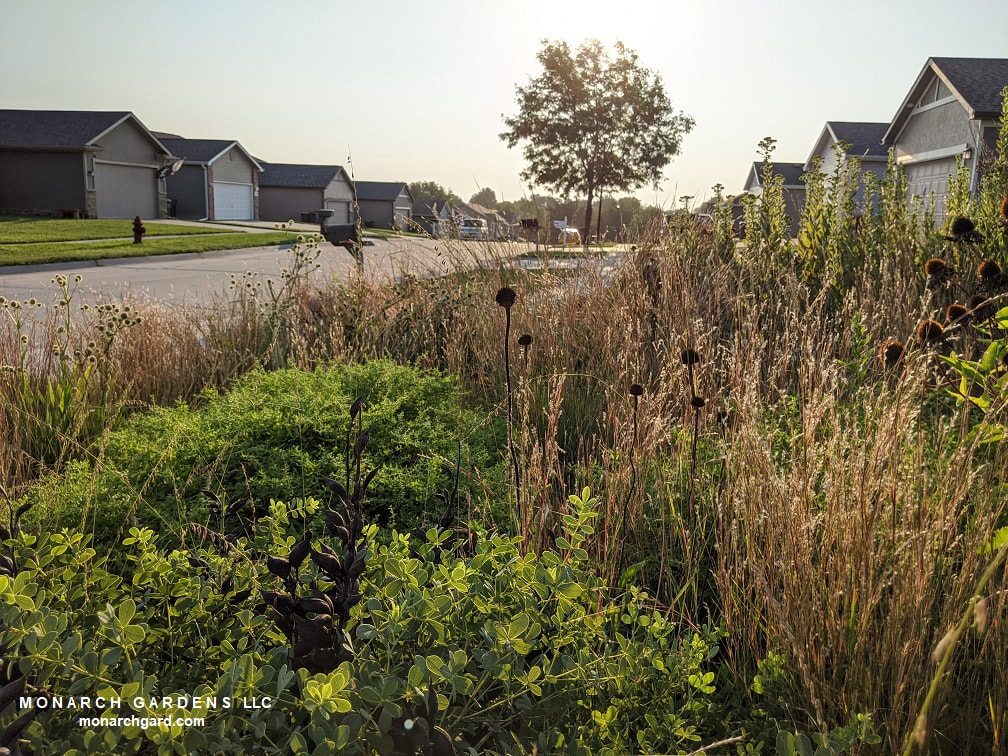
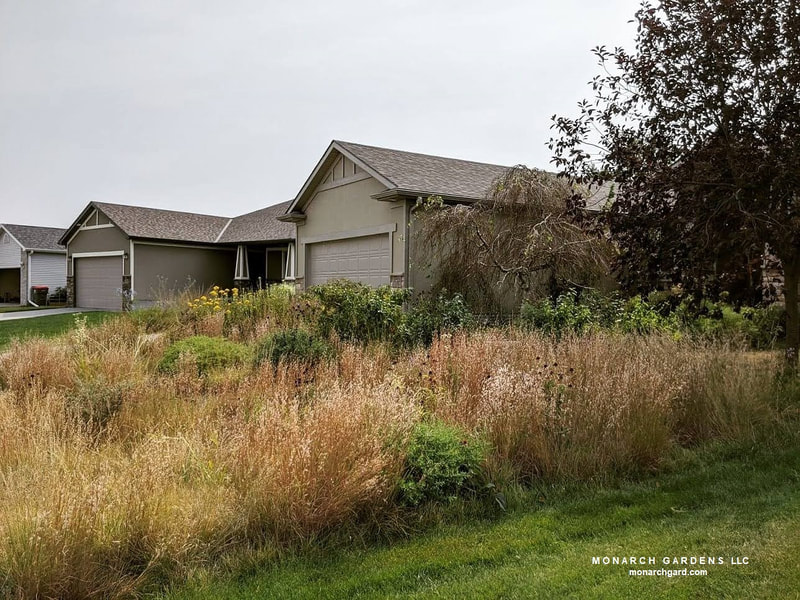
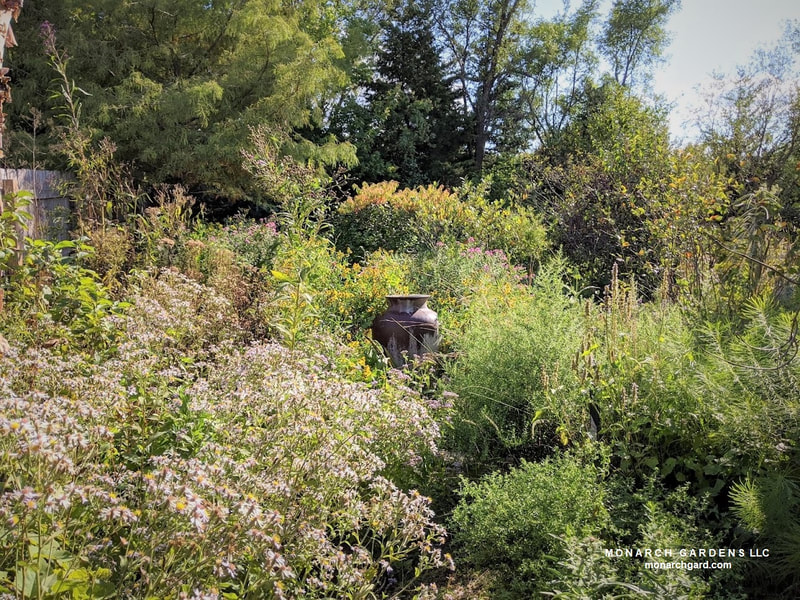
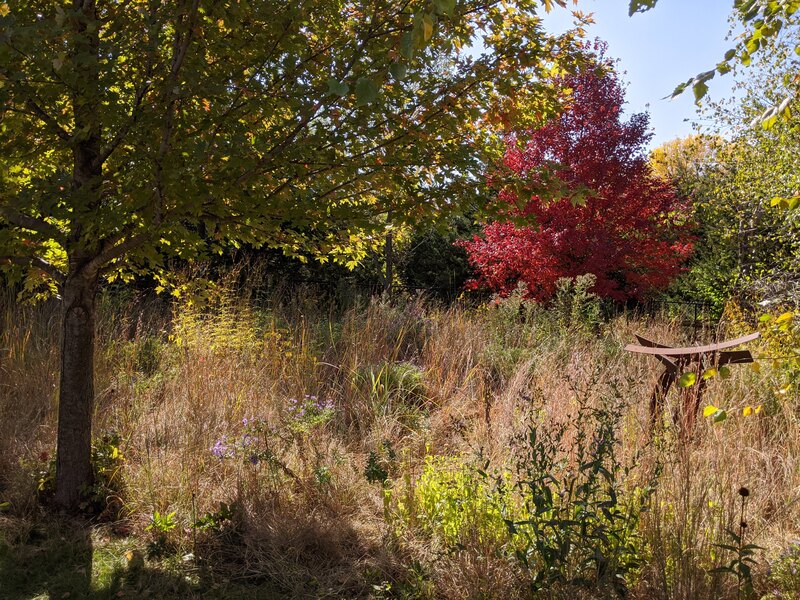
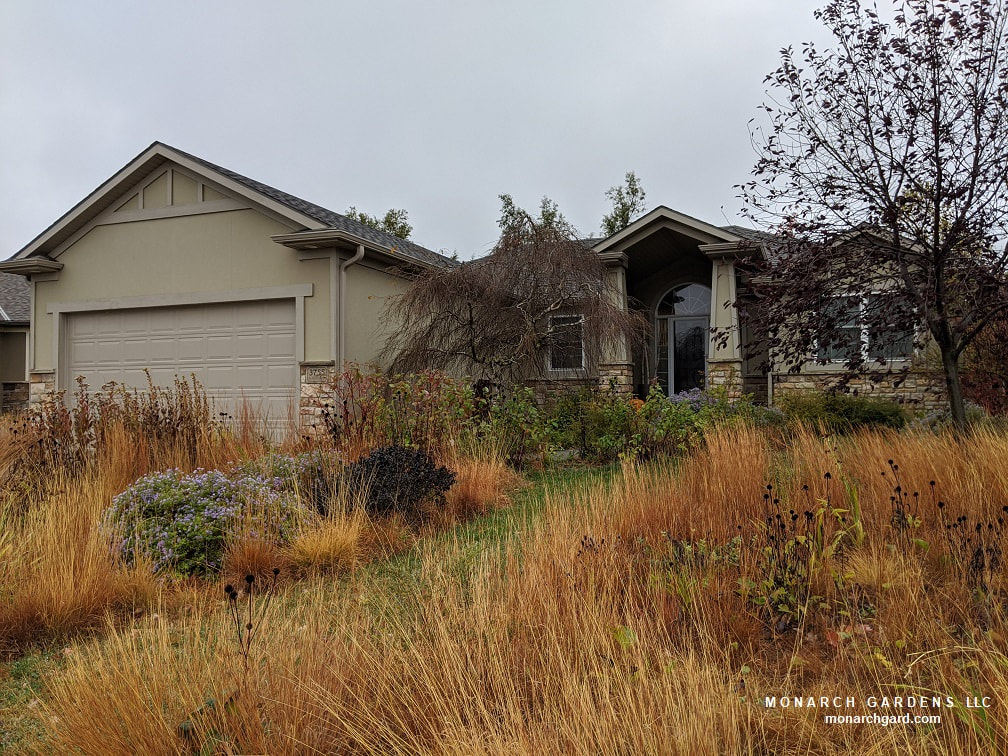
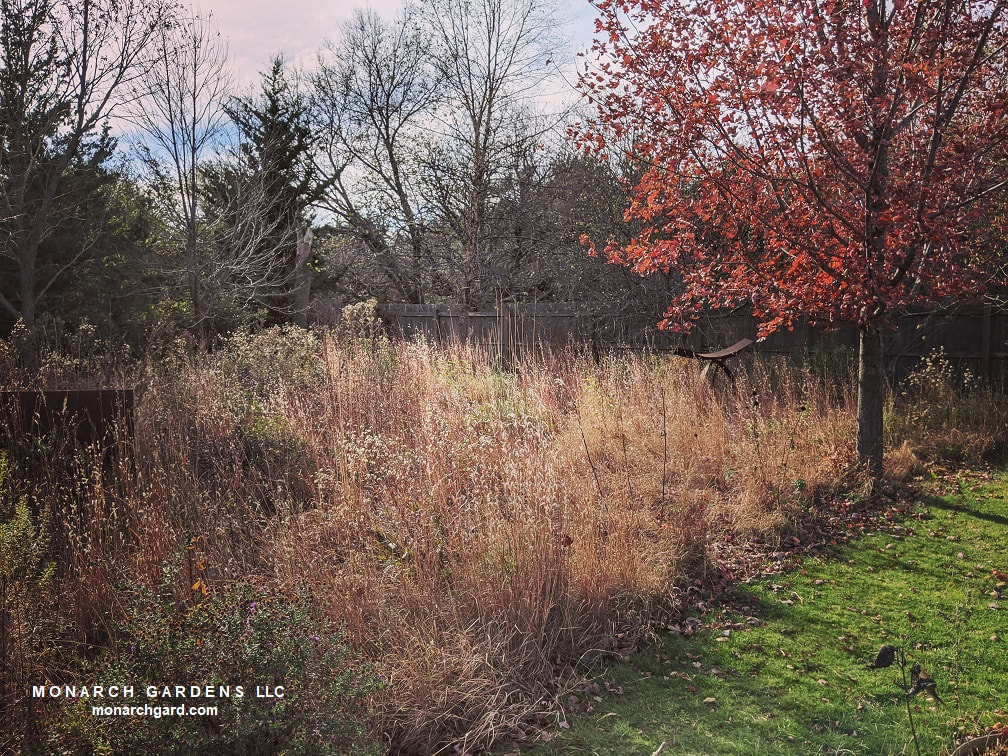
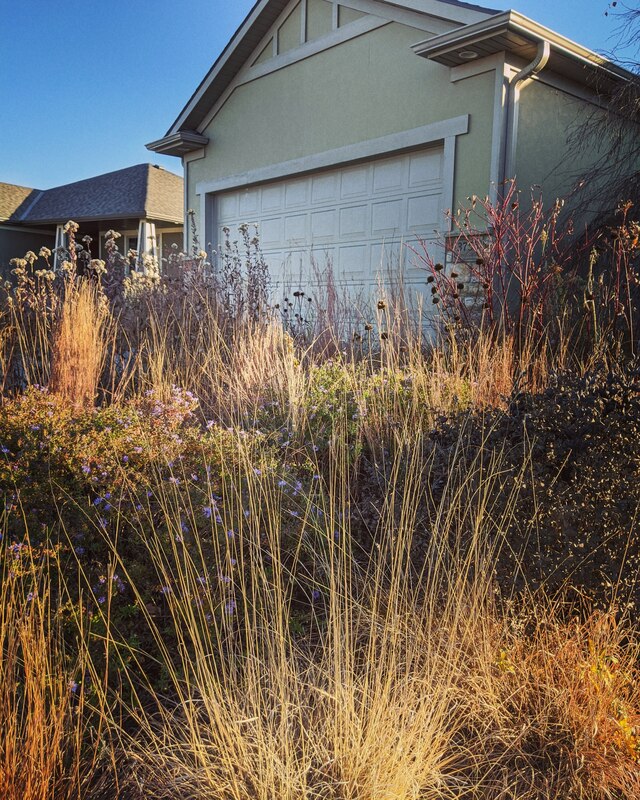
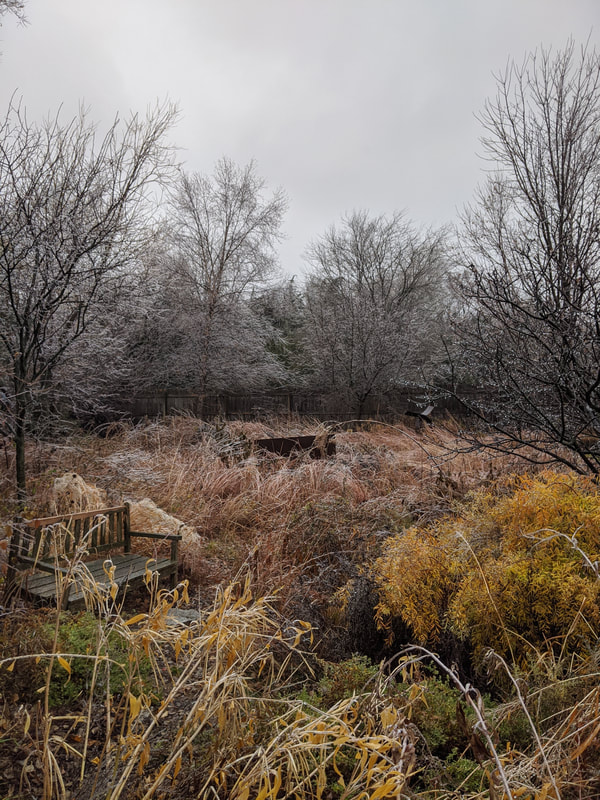
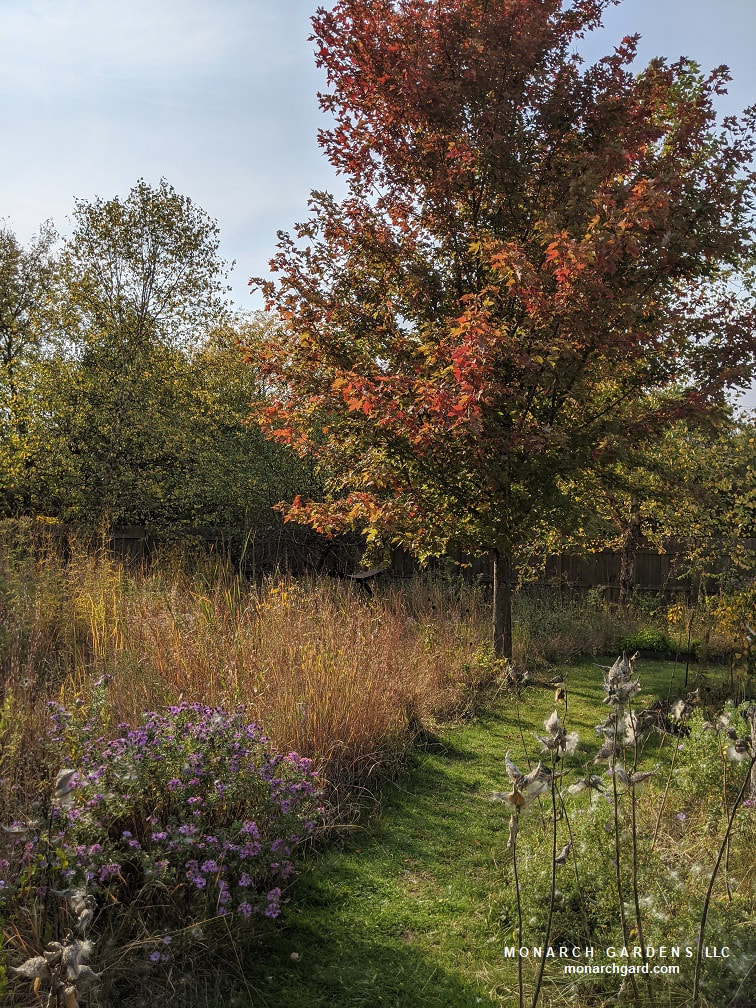
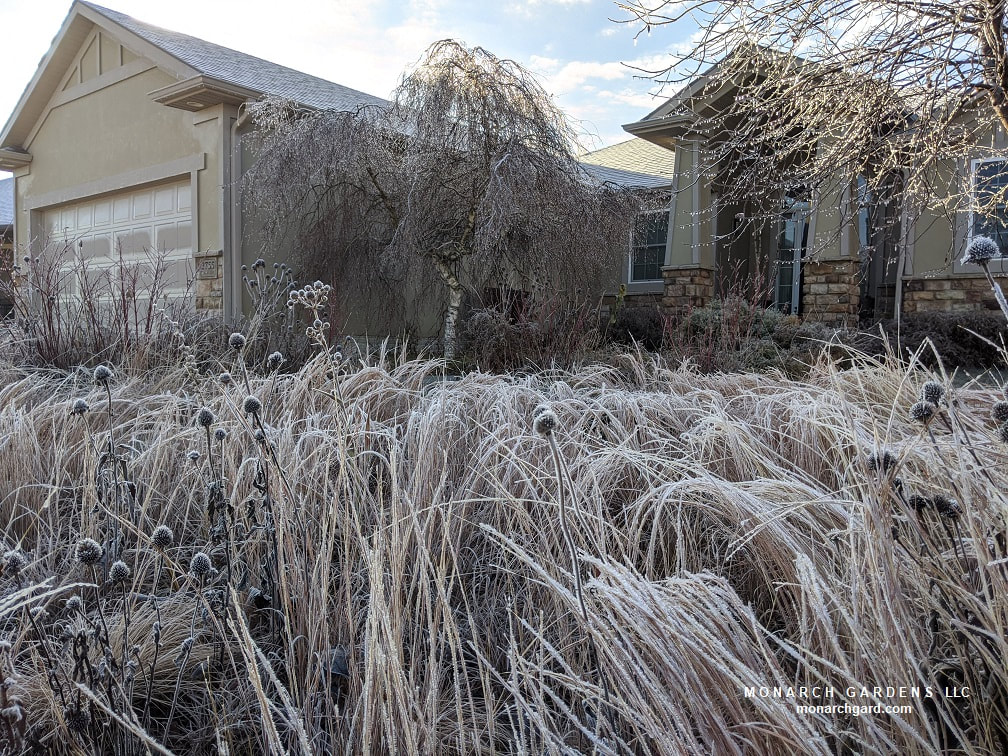

 RSS Feed
RSS Feed

